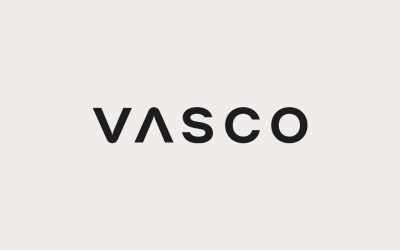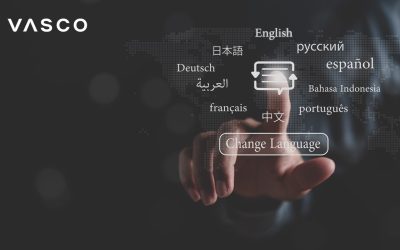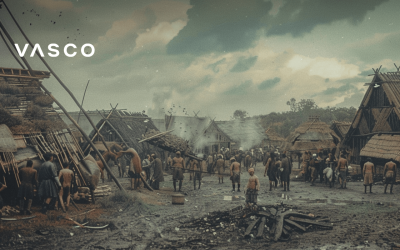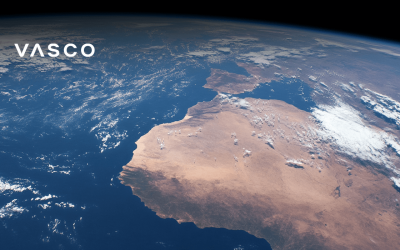From Elvish in Lord of the Rings to Dothraki in Game of Thrones, fictional fantasy languages have become an integral part of pop culture.
These languages are a fascinating way for authors and players alike to explore new worlds and create memorable stories.
But at least in some aspects, there is no such case as Dungeons and Dragons (DnD). With its own unique set of fantasy languages that can be used to create distinct cultures and give characters life-like personalities, it is one of the most interesting instances of fictional linguistic universes.
Today, we’re going to learn more about them. See what subjects we’ll dive into:
FAQ:
What language is spoken in D&D?
What language is common in D&D?
What is the universal language in D&D?
Is Gnomish a real language?
What is the most useful language in DnD?
What are the rare languages in D&D?
- What is Dungeons & Dragons 5e?
- What are the most common languages used in Dungeons & Dragons?
- How many languages are there in D&D?
- What are the exotic languages in D&D?
- How can you learn languages spoken in D&D?
- When can you use languages in Dungeons and Dragons?
- Who speaks dragon speech?

Table of Contents:
What are Dungeons and Dragons editions?
First, let’s make a short clarification about what is this universe we’re talking about today.
Dungeons & Dragons is a popular role-playing game (RPG) that has been around since 1974. It’s a fantasy game where players create their own characters and go on adventures in a world of magic and monsters.
It has seen many editions over the years.
1e was the first edition of D&D and is considered the most classic version of the game. 2e added more complexity to the game, while 3e made it easier for newcomers to learn how to play. Finally, 4e introduced a streamlined combat system that made it easier for players to track their progress during battles.
What is Dungeon and Dragons 5e?
The latest edition, 5e, was released in 2014 and has been the most popular version since then. The game is now enhanced to encourage players’ imagination, collaboration, and problem-solving skills.

In a nutshell:
One of the most important aspects of the game are distinctive languages. It’s one of the many tools that players use to immerse in this world even more.
It helps build many backgrounds for the characters, both cultural and ethnic.
But in the case of any tabletop RPG, players not only learn the vocabulary of the languages, but also use this knowledge in-game.
So now that we know how special those DnD languages are, let’s take a look at each one of them.
How many languages are there in D&D?
It’s estimated that there are currently over 100 distinct languages in the game, ranging from the common tongues of humans, elves, and dwarves, to the rare and ancient languages of deities and ancient civilizations.
Each language has its own unique set of words and phrases, as well as its own grammar and syntax, allowing for a wide variety of communication between characters. There are often different scripts & dialects for each language as well.
Standard languages spoken in Dungeons and Dragons
There are some languages spoken in the DnD universe that are much more popular than others.
It’s usually because some races are chosen more often by the players and, therefore, their languages are more in use.
Let’s see what are the most standard languages and how they impact the DnD world.

Common language
It’s no doubt the most popular one out of all DnD 5e languages.
Even though humans are typical speakers of Common, it’s shared by multiple races and other creatures in the game. Most creatures in Forgotten Realms speak the same language.
It is the language used for spells, rituals, and other magical effects.
As almost all NPCs in this game speak Common because it is represented by English in the player’s handbook.
Undercommon language
Undercommon is a very interesting case of DnD languages due to the fact that it’s used by a specific group outside of national & ethnic background. Typical speakers of Undercommon live in Underdark, but first and foremost, it is a univeral language of traders and merchants who also speak additional languages of their origins.
It’s a language spoken by most intelligent races in this underground area. It includes Dwarves, Grimlocks & Ropers.

Dwarfish language
With no surprise, it’s the language of the Dwarves. It’s one of the most widespread languages, as it followed Dwarves on their journey across the world.
What’s interesting, it’s one of the few DnD languages with its own unique runic script. For most races, it’s known under the name Dethek. This name also means the language of Dwarves in their own speech.

Elvish languages
Known also as Elven, languages in this category are spoken by Elves and Half-elves.
Still, most races know Elvish languages to some degree, mainly because there are many famous poems and songs written by Elvish bards.
Elvish has also two writing systems and different dialects.
- Wild Elvish. A highly musical language spoken by Sylvan Elves. Not very understandable to the other Elves.
- Seldruin. The form of language used for Elven High Magic.
- Espruar. An alphabetic writing system of moon elves.
- Hamarfae. The script for Seldruin language.
Elvish languages come in handy for almost all players, most importantly those who role-play Elves, Half-elves, and Mages using Elven magic.

Giant language
Giant language is spoken by Giants, including Hill Giants, Stone Giants, Frost Giants, Fire Giants, and Cloud Giants.
The language consists of a variety of dialects with some words shared between them. Giant language has been designed to be easy to learn and use for both player and a Dungeon Master alike.

Gnomish language
Gnomish language is a constructed language spoken by the Gnomes, a race of small humanoids in the game world.
It’s a simple enough language that doesn’t have much more trivia about it. However, it can sometimes come in handy; a character who knows it is likely to gain an advantage in certain situations.

Goblin language
Known also as Ghukliak, goblin language is yet another example of a popular DnD language.
It is spoken by Goblins, Hobgoblins, and Bugbears. Goblin language used Dethek script at first, but eventually the standalone Thorass alphabet was created in the 15th century.
Halfling language
The language of the Halflings, Luiric (or Lurienal), was mainly spoken by the Halflings of Luiren. However, due to the adaptability of the halflings, the majority of those living outside Luiren had stopped speaking their native tongue and instead used Common or other human languages.
Rare exotic languages
There are a lot of rare languages in Dungeons and Dragons, so let’s talk through the most interesting of them.

Draconic language: the ultimate secret language
Draconic language is one of the most unique Dungeons and Dragons languages. Spoken mainly by the Dragons, it’s a rare and secret language. The other speakers include only draconic-related natives, such as kobolds and Dragonborn, or reptilian races: Troglodytes and Lizardfolk.
The draconic speech is also known by the name of Glav which means “to speak” or “converse” in draconic language. Sometimes it’s also called “wizard language” as dragons are perceived as highly magical creatures.
Draconic language is one of the oldest in the world, believed to have been created by the ancestor species of true dragons. A draconic language uses a script known as Iokharic, which is equivalent to that of human languages.

Druidic language
The Druids, who worshiped Silvanus, developed the secret Druid language, which was only taught to members of their group.
Druidic language used its own alphabetic script and was composed of two distinct but related languages: Drueidan and Daelic. The first Druid language was spoken by most of the Druids, while those from the Moonshaes spoke Daelic.
It was forbidden for non-Druids to learn the druidic language.

Orc language
Orc, also known as Orcish or Daraktan, was a language spoken and written by the majority of Orcs. This language was based on the Dethek script and was derived from the older Hulgorkyn language used by the orcs.

Troll language
Troll language is the language spoken by trolls. It’s a mix of gibberish and guttural sounds and is very difficult for non-trolls to understand or speak.
Trolls are known to be cunning and manipulative creatures and they often use their language to deceive and manipulate others. They are not above using their language to trick people into doing things they don’t want to do.
Trolls also enjoy using their language to insult and mock people, and they often use it to intimidate and scare those they want to control.

Vampire language
Vampires in Dungeons and Dragons have their own language known as Vampiric. It has complex syntax and grammar, and it is only spoken by Vampires.
Vampiric language is mainly used to communicate with other vampires to cast spells and plan strategies for battles. It is also used for rituals and ceremonies, as well as for making contracts and agreements.
Warlock language
In Dungeons & Dragons, Warlocks are powerful spell casters who have made a deal with an extraplanar entity such as a devil, demon, or fey.
As a result, they gain access to a variety of magical abilities. Warlocks can speak the languages of their patrons, as well as any most common languages they are familiar with. Warlocks typically speak Abyssal, Celestial, and Infernal, as well as Draconic. While they may also understand many other languages, they typically do not speak them.

Dungeons and dragons language translator
When playing a session, it can come in handy to know words from the standard languages in this universe.
Of course, it’s impossible to brief here all the languages, so we prepared the most common languages in DnD below.
So, even though you won’t find an exotic languages table here, see the most important words in the Elvish language, Dwarvish language, and Draconic language:
Elven |
Common |
Dwarvish |
Common |
Draconic |
Common |
| alushtasa | rain | ae | gold | Aeros/Vaeros | Breath, Fire |
| ama | flower | agland | sword | Agyrt/Gyrtu | Ancient, Elder |
| ary | big | barak | strength/shield | Andra/Andre | Epic, Great |
| beneral | city | calass | theif | Aradace | High, Mighty |
| bhen | human | dauble | treasure | Auth/Autha | Black, Blind |
| cor | king | daul | daughter | Bane | Might, Powerful |
| enial | home | delvar | to dig | Claug/Clugh | Forest, Garden |
| enyor | battle | dornar | king | Dalagh/Dalah | Any weapon |
| erek | earth | drukafaren | city | Darrh/Darrath | Dread, Fearful |
| erkatam | dwarf | durgarn | dragon | Deszeld | Ambitous, Dragon |
| faenya | heal | dwar | dwarf | Durg/Daurgo | Dracolich, Foul |
| hakar | enemy | endar | cave | Eir/Majeir | Fortress, Grand |
| hakarmaskannar | dragon | faern | home | Endor | Brother/Sister, Companion |
| karask | demon | glor | lake | Gahl/Galad | Dying, End |
| kesir | elf | groht | stone | Golos/Gos | Air, Flying, Wind |
| kulaa | bread | groht | stone | Ingeir | Devoted, Heart |
| lani | beautiful | halaur | gift | Jhar/Ujhar | Charm, Mystic |
| lath | tree | hamar | hammer | Marun/Marux | Lightning, Mighty |
| lerret | magic | hurm | human | Ragoth | Heaven, High |
| maskan | fire | klar | bread | Ser/ Seyr | Moon, Orb |
| noarun | far | ol | magic | Sygax/Zygax | Battle, Ruler |
| nodel | moon | olor | world | Thrax/Uthrax | Giant, Growing |
| quar | dance | taerin | love | Thriin/Thriina | Archer, Arrow |
| revanthas | friend | torst | adventure | Treori/Treoris | Dream, Ilusion |
| scennal | inn | undivver | hope | Turac/Turace | Cold, Frozen |
| sehan | travel | vruden | wood | Uryte | Forgotten, Keeper |
| silath | mountain | wurn | water | Uxin/Xin | Hated, Poison |
| tarine | animal | yauthlin | rope | Vala/Valam | Noble, Queen/King |
| thar | good | zander | adventurer | Voar/Voarex | Dead, Deadly |
Dungeons and Dragons: Most frequently asked questions about languages
Still some doubts about how languages in Dungeons and Dragons work? Maybe we can help with that as well!
Can you learn languages in DnD?
Yes, there are many glossaries online to help you practice the vocabulary of a chosen language.
It can provide an immersive experience for players who want to explore their characters’ backgrounds or interact with NPCs in a more meaningful way. Additionally, it can help Dungeon Masters create unique plot points or puzzles that require language knowledge in order to progress in the game.
How does my character get their own language in Dungeons and Dragons?
One way to learn languages in the game is to find a teacher. You can look for NPCs who can teach you the language of your choice. Additionally, you can find magical items, such as a Manual of the Planes, that can teach you a language.
You can also take on certain quests that require you to learn a language. Finally, you can adventure in certain parts of the world where the language is spoken and learn it by immersion. So invest in a good language teacher, find magical items, take on quests, and explore the world to learn languages in Dungeons and Dragons.
How do I use languages in Dungeon and Dragons?
To use more languages in D&D, first, decide which ones your characters will know. Depending on their background, they may have access to certain languages (usually two languages). You can also choose to learn new language as a result of completing ceratin mission.
Once you’ve decided what languages your characters will know, you can start using them in-game. Encourage players to speak their characters’ native languages when appropriate.
NPCs also don’t only speak common and can comprehend languages specific to their nationality, so be sure to use that and talk multiple languages during your session. Finally, you can use more languages to add flavor to your world, by including phrases from different spoken languages in descriptions or giving NPCs unique accents. Using both popular and exotic languages in D&D can bring your world to life.
Can I learn a new language, after character creation has finished?
Yes. Just as described above, you can find many opportunities to learn new languages in-game.
Who Speaks Abyssal Language in 5e?
In the Dungeons and Dragons 5th edition game, creatures from the Abyss—such as Demons, Devils, and Yugoloths—speak Abyssal, an infernal language. Abyssal is an primordial language, dating back to the earliest days of the multiverse, and is only spoken by those with a connection to the Abyss.
Abyssal is often used by powerful spellcasters to summon creatures from the Abyss or to communicate with infernal beings. It is also spoken by some monstrous humanoids, such as Orcs, Ogres, and Trolls, as well as by certain evil cults.
What Language do Demons Speak in 5e?
Demons in 5e speak Abyssal. It is not so much a language as it is a set of harsh, guttural sounds and cacophonous words. It is difficult to learn and uncomfortable to speak, but those who wish to communicate with demons must do so in Abyssal.
What language do Dragonborn speak?
Dragonborn speak Draconic Language, which we talked about in detail above.
Do Tieflings speak Abyssal?
Yes, Tieflings do speak Abyssal in Dungeons and Dragons. As said above, Abyssal is a language spoken by Devils, Demons, and other evil creatures from the Lower Planes.
DnD Fantasy Languages: Summary
There’s no doubt that the universe of Dungeons and Dragons offers wonderful opportunities to immerse in this world and role-played adventures.
Languages are an important part of that. Each different creature in Forgotten Realms has its own language corresponding to unique background, nationality, and speech.
Did you find out any interesting facts about languages in Dungeons and Dragons?
If you’d like trivia about more languages, be sure to check the other sections of our blog. We write about them quite a lot, sometimes about the real-world too.
And if you wish there was a Dungeons and Dragons language translator, then who knows… Maybe someday Vasco Translator will be able to help you. That’s what we’d call a good D&D session accessory 🙂
In a nutshell:
Dungeons and Dragons is a popular role-playing game with its own unique set of fantasy languages. These languages are used to create distinct cultures and give characters life-like personalities. There are currently over 100 languages in the game, including the common languages of humans, elves, and dwarves, as well as rare and ancient languages of deities and ancient civilizations. The most popular languages are the Common language, Undercommon, Dwarvish, Elvish, Giant, Gnomish, Goblin, Halfling, and Orc languages. There are also rare exotic languages, such as Draconic, Druidic, Orc, Troll, Vampire, and Warlock languages. Players can learn languages in D&D by finding a teacher, finding magical items, taking on quests, or exploring the world. Languages can be used for spells, rituals, and other magical effects, as well as for communication, plot points, puzzles, and adding flavor to the world.











